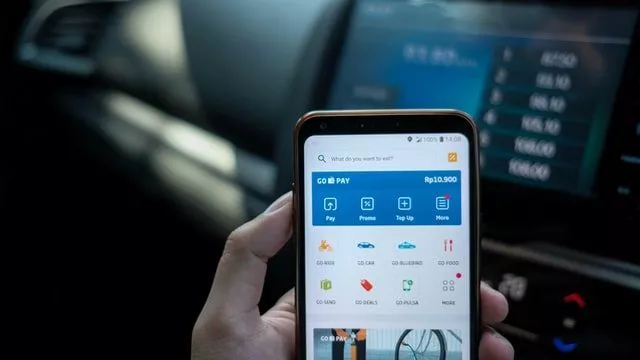Part of our Banking, Financial Services, and Insurance Series
Globally, there are approximately 258 million smart homes as of 2021 [1]. And this is projected to grow further as the smart home market is pegged to be worth 313 billion USD by 2026 from 79 billion USD in 2020 [2]. This is driven largely by the wide availability of the Internet of Things (IoT) capable personal products and home appliances.
This opens opportunities for a host of digital businesses to capitalise on the growing trend. One industry that stands to reap great benefits from this is the insurance industry. Especially InsurTechs (insurers who leverage technology innovations to maximise savings and efficiency from current insurance models) and their customers.
Insurers can maximise IoT devices
Insurance companies can leverage IoT enabled devices to generate copious amounts of data. That data can then be analysed to give insurers insight into the activities of their customers, allowing them to not only better understand their customers – and design products around them – but also predict and potentially avert incidents that lead to claims before they occur.
Virtually, everything is becoming smarter and insurers can tap into connected devices to access and use the data they generate. While this data can be directly accessible to insurers via sensors or mobile devices, third-party organisations may also play a role in ownership, aggregation, and distribution to insurers.
Here are some types of devices that insurers can tap into, and how they can be used:
Wearable or personal technology
The rising popularity of wearable technology helps users reduce health risks and even save money. This rapidly evolving technology, also known as fittech, is well suited to health and life insurers.
Integrated features such as heart rate monitors, step counters, and sleep trackers within these devices deliver critical data on the state of a customer’s health that insurers can leverage to make recommendations for lifestyle adjustments. Backed by the likes of Artificial Intelligence (AI) and data analytics, specific patterns present possible anomalies which alert insurers of potential health risks, allowing them to act proactively.
Prototype patches are also being developed for automated blood work, ECGs, and the administration of chronic drugs.
Sensors
Sensor-enabled security systems and utility monitors can also deliver information that allows property insurers to proactively act on, or even prevent, issues such as home invasions, fires, leaks or floods, geyser misuse and explosions, electrical damage, and more.
Vehicle insurers, on the other hand, can tap into sensors installed in personal and commercial vehicles to identify driving patterns and behaviours, measure travel distances, and monitor speed and braking levels. Insurers are already leveraging this data to offer tailored packages to drivers, backed by rewards for “good driving”. From a more holistic perspective, this data – collected and collated from multiple sensors – can aid insurers in guiding their customers to avoid common driving problems such as navigating high accident or hi-jacking areas, overheating due to being stuck in traffic, and theft.
Location-based sensors, such as tracking devices and cameras, can likewise assist with the prevention of theft and fraud, enabling insurers to tap into the whereabouts of various moving and unmoving assets.
Geographical Information Systems (GIS)
GIS provides geophysical, topographical, climatological, and hydrological data. This delivers insights that insurers can use to warn customers of impending natural disasters such as storms, floods, and other dangerous weather phenomena. The data can contribute to helping minimise damage caused by these events, thereby reducing the number of potential claims.
Leveraging IoT Data
The data generated by IoT can be used in several areas of insurance. The convergence of different data types leads directly to increased precision in assessing risk, pricing policies, and estimating necessary reserves. There are clear advantages over current approaches, which traditionally rely on backwards-looking claims data and historical risk studies. Through constant monitoring of IoT-delivered data, underwriters can recommend real-time pricing and policy terms, as well as health and well-being services to manage mortality and morbidity risks over time.
IoT is likely to drive further evolution in claims, as it orients more toward active loss prevention. For example, in-vehicle sensors can be useful in providing warnings in case of dangerous driving patterns. Within group health insurance, the discounts offered to employees who monitor their activity levels and heart rates could also be considered a claims prevention program.
Commercial insurers can leverage GIS data to mature their modelling capabilities, especially relative to natural disasters. Security systems, access control systems, and tracking devices all play a role in helping insurers with both investigations as well as monitoring of an organisation’s practices and adherence to health and safety protocols.
Life insurers can now automate and streamline the traditionally intrusive and lengthy underwriting process because sensor data provides the means to answer a lot of the questions from yesterday’s outdated paper-based application forms.
The impact
Insurers would be able to better profile their customers by looking into ways in which they can improve and tailor their products according to actual customer behaviour. As they can better monitor what is happening to their customers, it makes it possible to reduce their risk ratings and at the same time reduce their customer’s premiums, giving them a competitive edge.
Insurers may also improve their customer experience—from speeding up claims to offering behaviour-based rewards programs, and providing proactive tips and alerts.
Where to start?
While investigating the host of exciting new and emerging architectures available for the provision and analysis of IoT data, insurers should engage their customers to identify their data and confirm the accuracy thereof. In line with data protection protocols and legislation, insurers are expected to give their customers peace of mind about the security and privacy of their data.
Creating an analytics culture is critical and helps to create the focus on layering insights back into business as usual while engendering an environment that is agile and adaptive to change. Old architectures, legacy systems, and traditional processes will need to be revisited and adjusted to make room for new developments. Advanced analytics and data science also assist with identifying and attracting talent.
However, insurers don’t need to completely change. By focusing on product enhancements rather than creating additional channels, and developing “featurisation” and bundling capabilities, they can add onto their revenue stream and their customers retain familiarity with their improved products.
Ultimately, using IoT data should be adding to the whole customer experience, ensuring that insurers can deliver better, more customised products while maximising their service and bringing costs down – for themselves and their customers.
What you can do next.
Monstarlab’s global pool of technology experts can help you find your way into new technologies and uncover executions that would make the most business sense and value. Working closely with you to understand your goals and align the most relevant technologies. We have extensive experience working in IoT with some of the world’s leading brands and you might find these cases to be interesting: Hunter Douglas, Angel Electronics, and Otis Elevators.
Meet our Expert

Connect on LinkedIn | jackie.du.plooy@monstar-lab.com
Jackie has over 20 years of experience in digital transformation, strategy & innovation, and commercial management across industries including BFSI in several countries as a Client Partner. Her focus has been on building high performing teams and sound strategic partnerships by bringing together delivery and commercial professionals to drive the customer strategy and journeys of digital transformation.
Learn more about Monstarlab UAE
Read more about banking, financial services, and insurance here
Endnotes:
[1] Statista
[2] Statista, Smart home – Statistics & Facts, 2022




